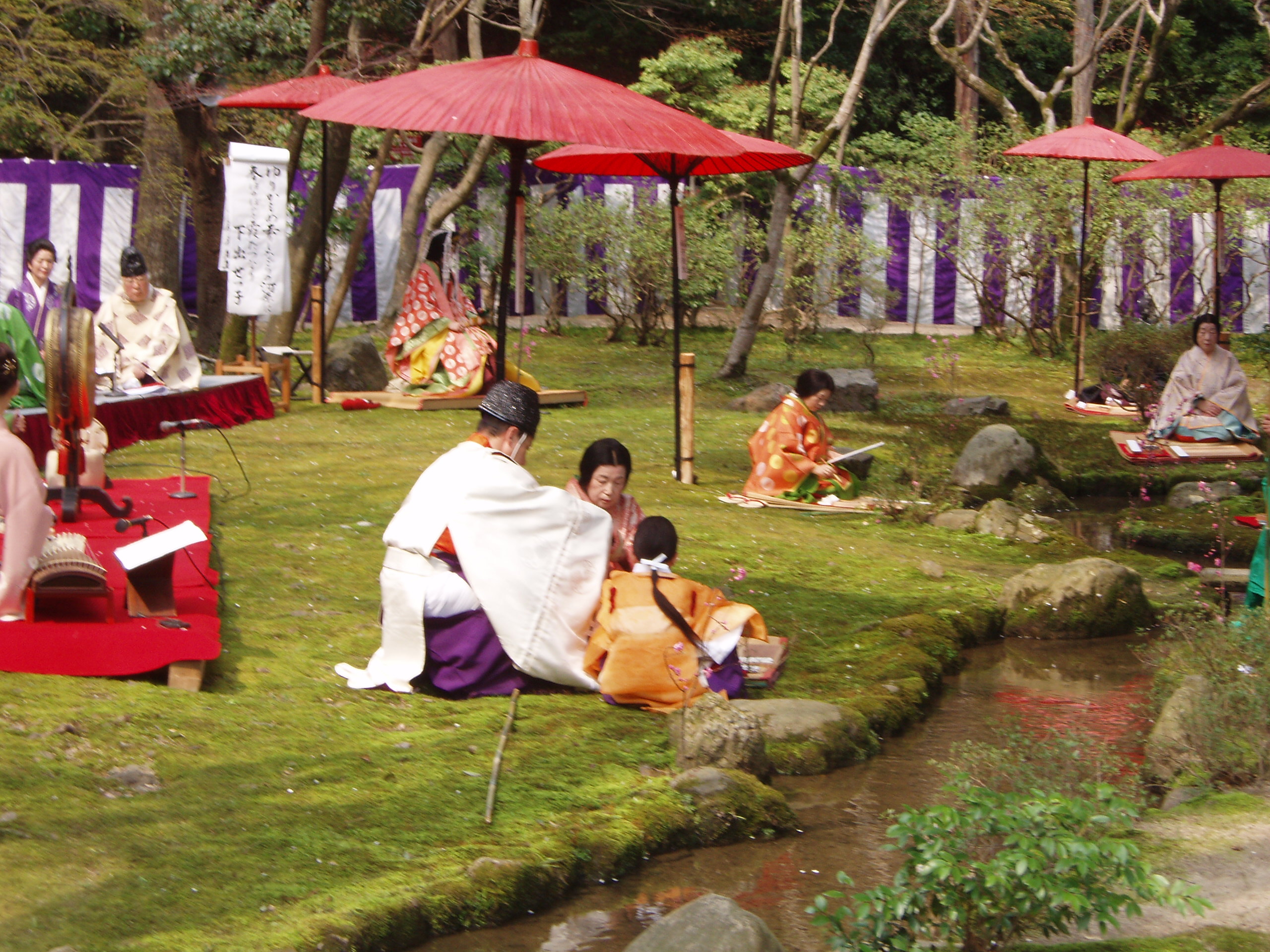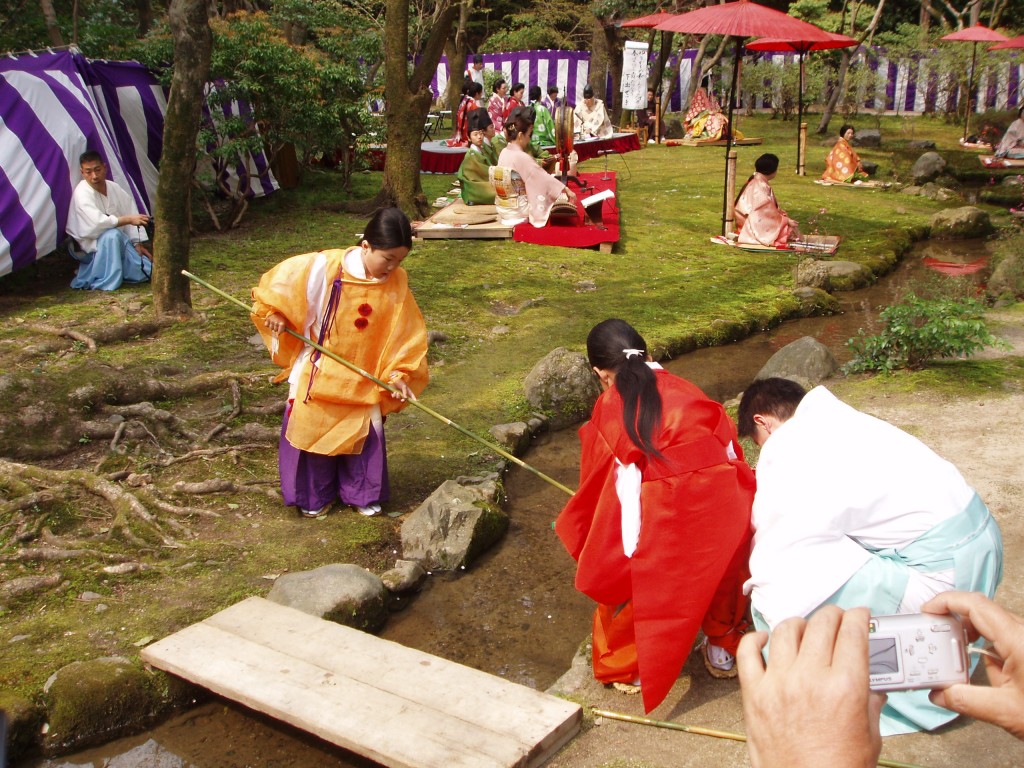Heian Verse and Winding-River Parties
Think of Heian-kyo (the old name for Kyoto), and what comes to mind? Aristocratic villas, perhaps, and The Tale of Genji for sure. Behind the images this evokes is an aesthetic called miyabi, or courtly refinement. It affected all areas of life, from clothing to pastimes such as moon-watching. At a time when much of Europe was mired in feudal struggle, the Heian court produced one of the world’s great cultural flowerings.
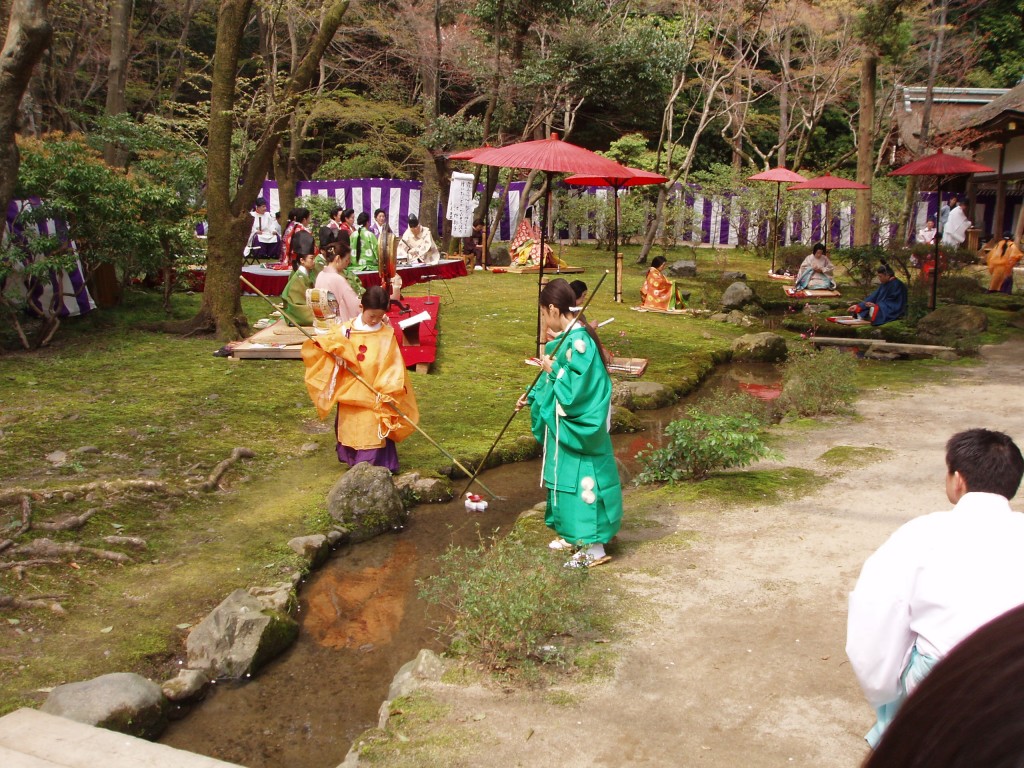 To convey their delicate feelings the aristocrats used verse as a means of expression, in particular the short poetry form known as waka. This was based on a 5-7-5-7-7 syllable pattern (haiku was formed later by dropping the last two lines). Topics ranged from nature appreciation through the whole gamut of love found and lost.
To convey their delicate feelings the aristocrats used verse as a means of expression, in particular the short poetry form known as waka. This was based on a 5-7-5-7-7 syllable pattern (haiku was formed later by dropping the last two lines). Topics ranged from nature appreciation through the whole gamut of love found and lost.
Of the many anthologies, the most famous are the tenth-century Kokinshu (Collection of Ancient and Modern) and the thirteenth-century Ogura Hyakunin Isshu (One Hundred Poems by One Hundred Poets). The former, containing 1,111 poems in all, was the first of twenty-one imperially sanctioned collections. In a perceptive preface by Ki no Tsurayuki, it identified the characteristics of the genre as sensitivity to nature, awareness of transience, and cultivation of harmony.
The preface built on the creed of Prince Shotoku (573-621), who had begun the country’s first constitution with the following: ‘Respect above all harmony. Your first duty is to avoid discord.’ It was not coincidental that the Chinese characters for ‘Japan’ and ‘harmony’ had been collided into one and the same ideograph, pronounced ‘wa’. Japan literally spelt harmony. Tsurayuki’s genius lay in the articulation of an aesthetic to underlie this.
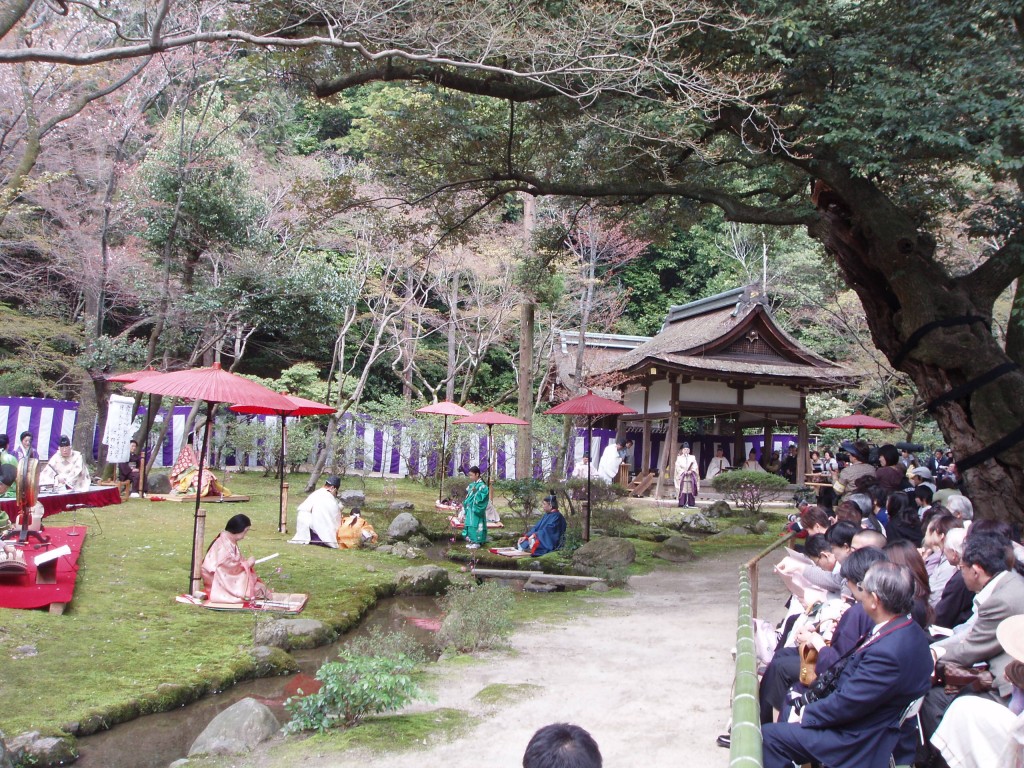 Since humans resonate in tune with harmony, runs his thesis, the poet can promote unity by capturing the ‘good vibrations’ in words. These were communicated to others through sound, for waka were not simply written words but meant to be chanted out loud. (Translated literally, waka means ‘Japanese song’ and the verse are referred to as uta, or songs.) You could say then that the poems are a form of harmony in more ways than one.
Since humans resonate in tune with harmony, runs his thesis, the poet can promote unity by capturing the ‘good vibrations’ in words. These were communicated to others through sound, for waka were not simply written words but meant to be chanted out loud. (Translated literally, waka means ‘Japanese song’ and the verse are referred to as uta, or songs.) You could say then that the poems are a form of harmony in more ways than one.
Representative Poets
One noteworthy writer of waka was the ninth–century courtesan, Ono no Komachi. She is known in Japan as one of the ancient world’s three great beauties (along with Cleopatra and the Chinese, Youkihi). At her death she left behind some 80 poems, most of which speak of longing and frustration.
Komachi was apparently a lady-in-waiting, who later retired to a hermitage. The best-known story about her tells of how she once asked a suitor to prove his sincerity by visiting from his distant home for a hundred successive nights. He completed the journey ninety-nine times, but died on the hundredth occasion when he was caught in a snowstorm.
There is a tragic air to Komachi’s life as she plummets like Greta Garbo from pin-up to recluse, and not surprisingly the transience of beauty forms the theme of her best-known poem:
The flowers withered
Their colour faded away
While meaninglessly
I spent my days in the world
And the long rains were falling
Another female writer of distinction is Izumi Shikibu (c. 1000), who lived in the Golden Age of Heian-kyo when The Tale of Genji and The Pillow Book were written. Over 1,500 of her waka remain, from which it is evident she was a woman of passion with a turbulent emotional life. She was brought up at court and married twice to middle-ranking men, but her great love is described in her Diary where she tells of an affair with Prince Atsumichi. He installed her in his palace, but not long afterwards died in an epidemic. Izumi was plunged into grief, and the intensity of her poems echoes down the centuries:
Yearning for you
My heart has shattered
Into a thousand pieces
But never will one particle
Of my love be lost.
A third poet of note is Saigyo (1118-90), a wandering priest who was a forerunner of Basho. Born into the warrior class, he had a prestigious job as a bodyguard but dropped out to take orders at Shoji-ji in Katsura, south-west Kyoto. It was here he first wrote of cherry-blossoms, a topic for which he became famous.
They disturb the peace
The crowds of people who come
To view the blossom:
Who is there to blame except
The blossoming tree itself?
Later Saigyo left the capital to base himself at Mt Koya while wandering around Japan. He identified himself with the moon, whose passage across the sky mirrored his own solitary journeys. At the same time its ever-changing shape was a reminder of impermanence, and its ethereal beauty suggestive of life’s pathos. In one of his poems he movingly combined his two poetic passions by asking to die in cherry-blossom time under a full moon. According to tradition, he did.
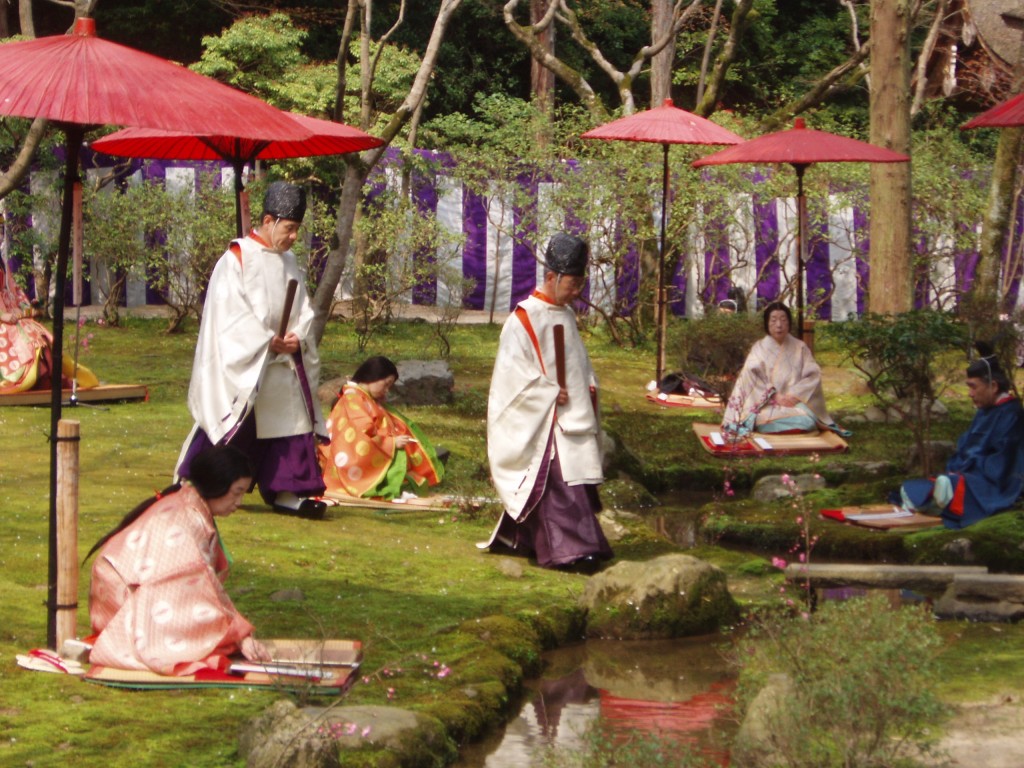
Capturing the Past
Every year in April Kyoto shrines offer two wonderful chances to appreciate ‘Japanese songs’ in recreations of a Heian poetry contest. These Kyokusui no Utage (Winding–stream Parties) are held at Jonan-gu and Kamigamo Jinja, featuring elegant Heian-era robes Contestants sit by the banks of winding streams penning calligraphic verse to the sound of gagaku. Topics are set in advance, and sake cups placed in the water to float downstream. Completion of a verse means the writer can take a drink.
Here can be seen the salient traits of the Heian nobility. The beautiful clothing; the aesthetic care; the sensitivity to nature. And with the winning waka being performed in song amongst the spring blossoms, one catches a sense of what Tsurayuki meant by cementing harmony between man, kami and nature.
For a brief moment of time one has a sense of having stepped out of the concrete jungle and into a realm of elegance and elevating verse. As with Alice in Wonderland, you feel you’ve entered another dimension altogether, one where time slows down and the voice of nature can make itself heard. Try it and who knows: you may start writing waka too.
(The article is adapted from John Dougill’s book on Kyoto: A Cultural History).
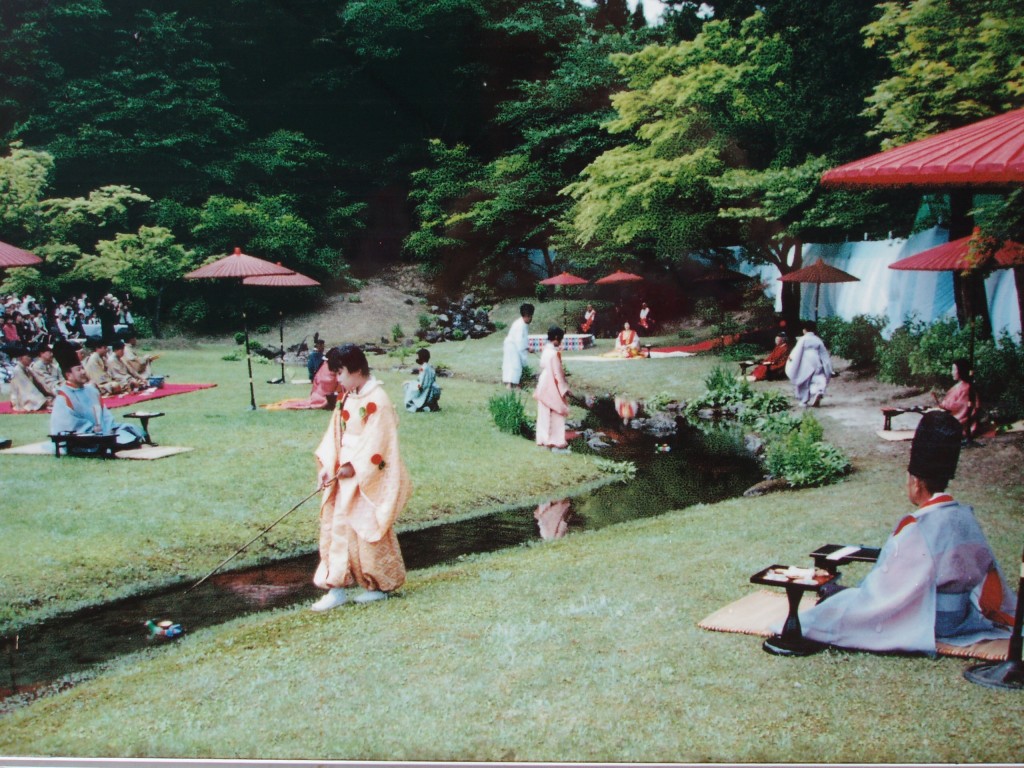
A reenactment of Heian-era poetry contests at Hiraizumi in northern Japan

